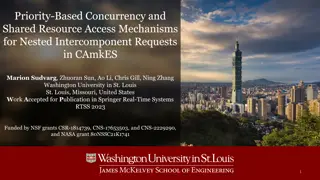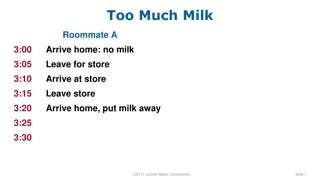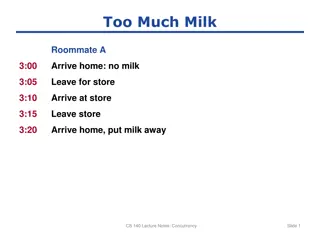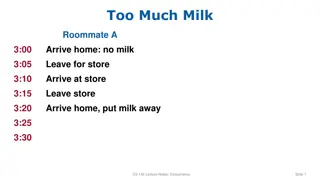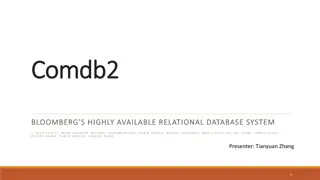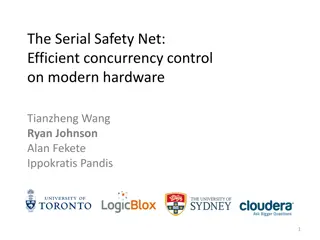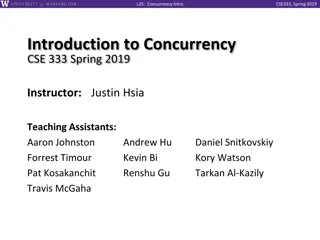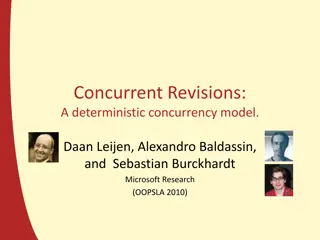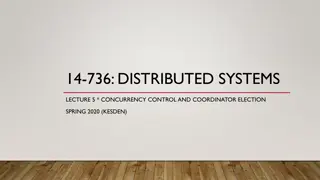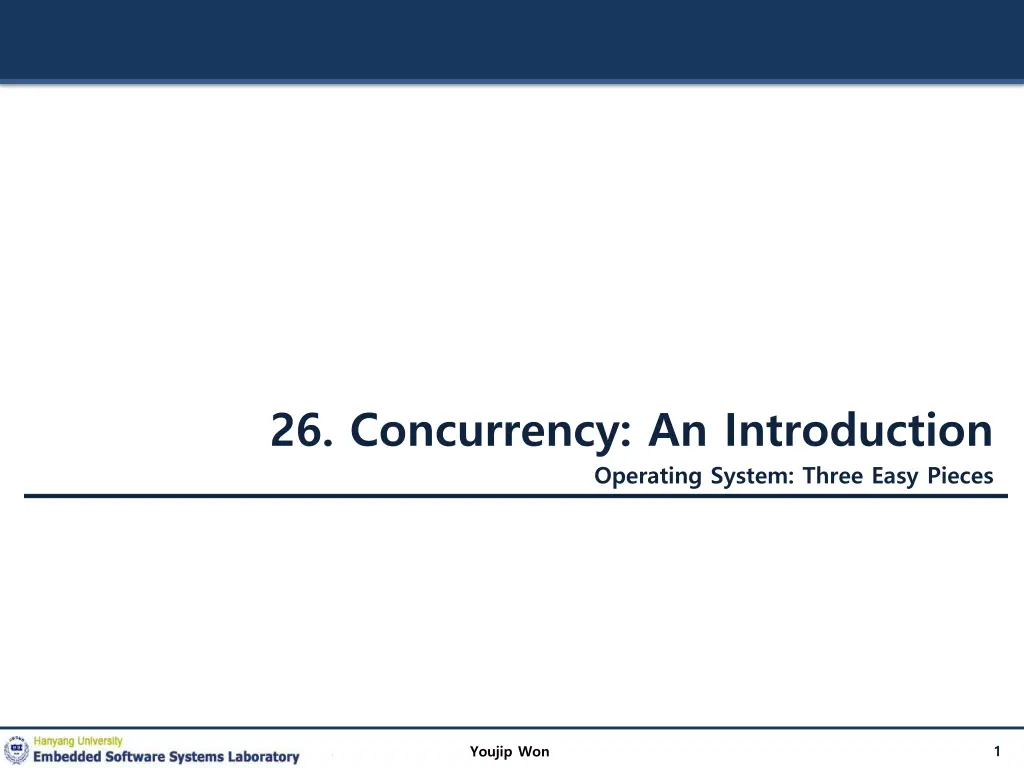
Introduction to Concurrency in Operating Systems
Explore the concept of concurrency in operating systems through threads, context switching, stack management, race conditions, critical sections, and locks to ensure the atomic execution of shared variables.
Download Presentation

Please find below an Image/Link to download the presentation.
The content on the website is provided AS IS for your information and personal use only. It may not be sold, licensed, or shared on other websites without obtaining consent from the author. If you encounter any issues during the download, it is possible that the publisher has removed the file from their server.
You are allowed to download the files provided on this website for personal or commercial use, subject to the condition that they are used lawfully. All files are the property of their respective owners.
The content on the website is provided AS IS for your information and personal use only. It may not be sold, licensed, or shared on other websites without obtaining consent from the author.
E N D
Presentation Transcript
26. Concurrency: An Introduction Operating System: Three Easy Pieces 1 Youjip Won
Thread A new abstraction for a single running process Multi-threaded program A multi-threaded program has more than one point of execution. Multiple PCs (Program Counter) They share the same address space. 2 Youjip Won
Context switch between threads Each thread has its own program counter and set of registers. One or more thread control blocks(TCBs) are needed to store the state of each thread. When switching from running one (T1) to running the other (T2), The register state of T1 be saved. The register state of T2 restored. The address space remains the same. 3 Youjip Won
The stack of the relevant thread There will be one stack per thread. 0KB 0KB The code segment: where instructions live Program Code Program Code 1KB 1KB The heap segment: contains malloc d data dynamic data structures (it grows downward) Heap Heap 2KB 2KB (free) (free) Stack (2) (it grows upward) The stack segment: contains local variables arguments to routines, return values, etc. (free) 15KB 15KB Stack (1) Stack (1) 16KB 16KB Two threaded Address Space A Single-Threaded Address Space 4 Youjip Won
Race condition Example with two threads counter = counter + 1 (default is 50) We expect the result is 52. However, (after instruction) OS Thread1 Thread2 PC %eax counter before critical section mov 0x8049a1c, %eax add $0x1, %eax 100 105 108 0 50 51 50 50 50 interrupt save T1 s state restore T2 s state 100 105 108 113 0 50 51 51 50 50 50 51 mov 0x8049a1c, %eax add $0x1, %eax mov %eax, 0x8049a1c interrupt save T2 s state restore T1 s state 108 113 51 51 50 51 mov %eax, 0x8049a1c 5 Youjip Won
Critical section A piece of code that accesses a shared variable and must not be concurrently executed by more than one thread. Multiple threads executing critical section can result in a race condition. Need to support atomicity for critical sections (mutual exclusion) 6 Youjip Won
Locks Ensure that any such critical section executes as if it were a single atomic instruction (execute a series of instructions atomically). 1 lock_t mutex; 2 . . . 3 lock(&mutex); 4 balance = balance + 1; 5 unlock(&mutex); Critical section 7 Youjip Won
Disclaimer: This lecture slide set was initially developed for Operating System course in Computer Science Dept. at Hanyang University. This lecture slide set is for OSTEP book written by Remzi and Andrea at University of Wisconsin. 8 Youjip Won

